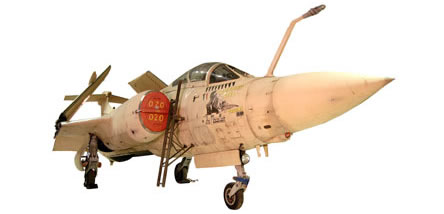Hawker Siddeley Buccaneer S2B
| Serial No: | XW547 |
| Period: | Post-WWII |
| Reference: | 1993/0859/A |
| Museum: | London |
| Location: | Hangar 6 |
| On Display: | Yes |
Royal Air Force Buccaneers first saw combat during the 1990-91 Gulf War (Operation ‘Granby’), 22 years after entering service. Although the Buccaneer was seen in 1969 as an interim type pending the development of the Panavia Tornado, the last examples were not retired until March 1994.
Designed by Blackburn Aircraft (later Hawker Siddeley Aviation) to a naval requirement for a carrier-based, low-level maritime strike aircraft, the Buccaneer S1 entered service with the Fleet Air Arm in 1962.
Attempts to interest the Royal Air Force in the type as a replacement for the Canberra bomber were unsuccessful. However, following the termination of its intended replacement, the American F111, the Buccaneer S2 variant was ordered in July 1968. 108 Buccaneers entered RAF service. Forty-six were new aircraft; the balance came from the Fleet Air Arm, as aircraft carriers were phased out in the 1970s.
From 1972 two squadrons of Buccaneers served in RAF Germany until replaced by Tornados in 1984. Maritime strike/attack and reconnaissance then became the aircraft’s primary role, along with the secondary task of carrying laser designator equipment for precision attacks. Twelve Buccaneers were deployed at short notice to the Gulf during Operation ‘Granby’ to designate targets for Royal Air Force Tornados and Jaguars.






